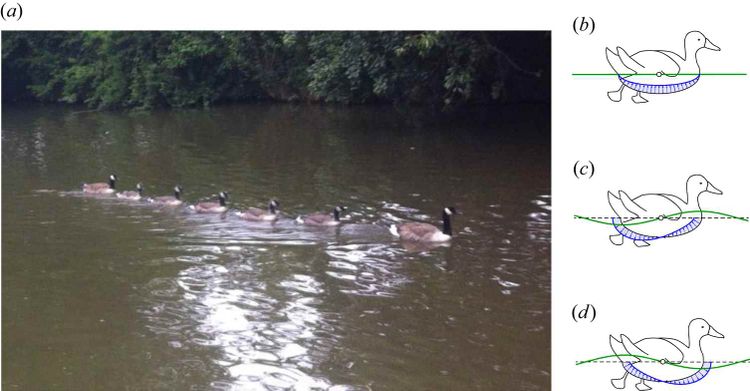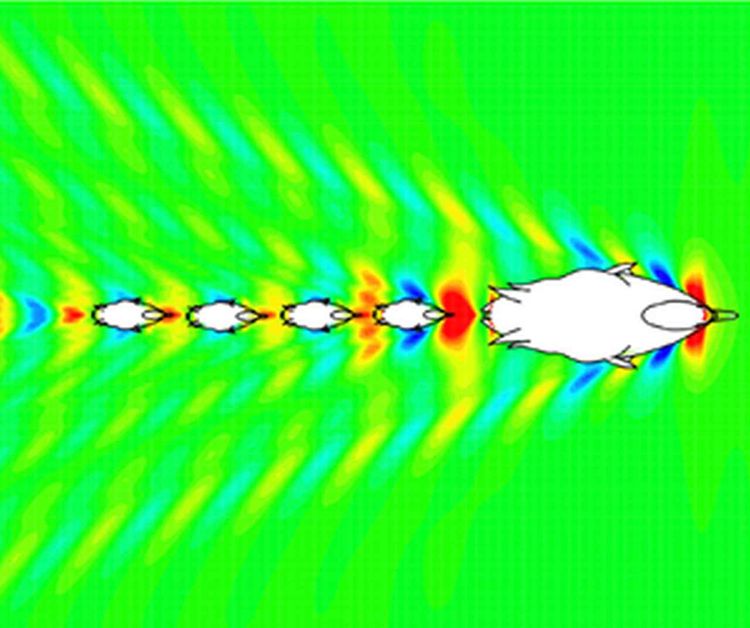In this guest blog physicist Andrea Navarro Quezada talks about the Ig Noble physics wining topic on the study of duckling swimming formations.
On October 6th, the Nobel Prize for Physics was given to Austrian Physicist Anton Zeilinger for his work on quantum entanglement together with two other physicists. Since then, Anton Zeilinger was interviewed several times, appeared in radio and tv-shows and tried to explain the phenomenon of quantum entanglement in a simple way making use of cinnamon rolls, twins and colourful dices. Therefore, I will not make any effort in trying to go into quantum physics, but I will rather talk about another type of prestigious science award: the Ig-Noble Prize.
The name Ig-Noble comes from the word ignoble, which means unworthy. The Prize honours achievements in science that first make people laugh, then think. The prizes are intended to celebrate the unusual, honour the imaginative and increase people’s interest in science, medicine, and technology. The Ig-Noble Prizes are awarded in September each year and this year’s Ig-Noble in Physics was awarded to physicist Zhi-Ming Yuan and colleagues from the University of Strathclyde in Glasgow for trying to understand how ducklings manage to swim in formation.
One single duck on the water
So, what is the physics behind the ducklings formation? Actually, the answer is quite simple: it is energy minimization as many other problems in physics. To understand the energy minimization, think about yourself entering a five storage building. Most of us will take the elevator instead of the stairs to go up, because going up the stairs requires more energy than going into the elevator. The same applies in nature.

In the case of a duck (it can also be a goose or any other swimming bird) in water, one can consider three scenarios as seen in the picture below: (b) first, the duck is in calm water (shown by the straight green line) and can float thanks to the hydrostatic pressure of the water (shown as tiny blue arrows, only seen if enlarged) acting against the weight of his body. Meaning, the water pushes the duck up, while its weight pushes it down. Because of force equilibrium the duck floats on the water.
The (c) second and (d) third scenarios are when the water is in motion and waves are formed. Most of us have seen water waves in lakes, ponds or in the sea. A wave, whether it is a water wave, a light wave or soundwave, has ups and downs, or correctly crests and throughs. The distance between two crests (or two throughs) is known as wavelength.In visible light, the wavelength determines the color of the light: red (long wavelength) to violett (short wavelength).
But let's go back to the duck: consider the duck in the two pictures below the first scenario: in the upper one (scenario two), the duck is swimming behind the wave, that is in a through, and has to make more effort to overcome the wave. However, if it rides the wave, meaning it swims on the crest (scenario three), it requires less energy because it will be propelled by the wave. Thus, it is energetically more convenient for a single duck to swim always on the crests. However, this is only possible if the position of the duck with respect to the wave remains unchanged, meaning that the duck has to move forward with a constant velocity which is equal to the velocity (correctly group velocity) of the wave. Otherwise, if the wave moves faster than the duck, it will fall behind. If the duck is faster, he will fall into a through and will have to increase the effort to ride the wave again.
The duckling formation
Have you ever observed a swimming duck? The movement of the duck in the water will create a very typical pattern: a triangle formed by two side arms and a steady wave behind it. This is shown in the picture below, where the red and blue colours indicate the crests and throughs of the waves formed, respectively.

In order for the physicists to understand why the ducklings swim behind their mother, they had to mathematically simulate the motion of the mother first. For this, they considered the mother duck to be a big ellipse. Then they placed a duckling – simulated by a small ellipse – at different positions in their simulation and mathematically solved the position of minimal energy for the duck with respect to the movement of the mother. Then they increased the number of ducklings. The result was that in in order to keep the minimal energy condition the ducklings need to keep the same speed as their mother, who is leading the way. And they found out that the best position for the ducklings is when they swim in the throughs of the steady wave behind their mother, as seen also on the picture. But, was it not more favourable to swim on the crest? Yes, but this is only valid for a single duck. When the ducklings swim in formation behind their mother, the waves created by the ducklings and the mother interfere and make the position at the through energetically more favourable. One could say, that the ducklings are carried by the mother’s motion in this particular formation.
Now many of you might think this is useless knowledge, but according to the authors understanding the principles of the ducklings formation could be employed to design modern freight carrying vessels, like a water-train, to transport more cargoes without extra fuel cost. In any case, the Ig Noble Prize in Physics has made me look at swimming ducks from another perspective and I hope so do our readers. (Andrea Navarro-Quezada, 17.11.2022)
Link
More blog posts
- Life after scientific research
- Hydrogen: a versatile gas
- Edith Stoney: The first female medical physicist